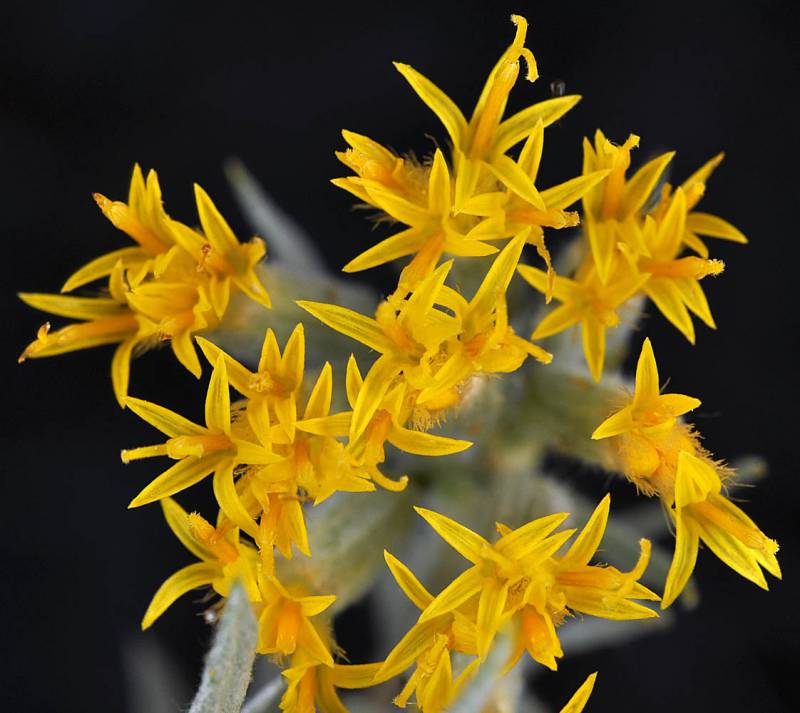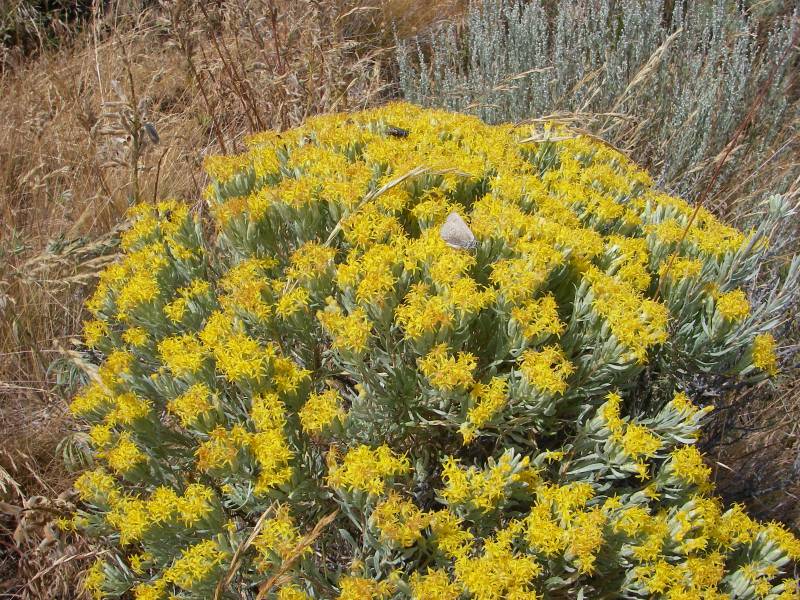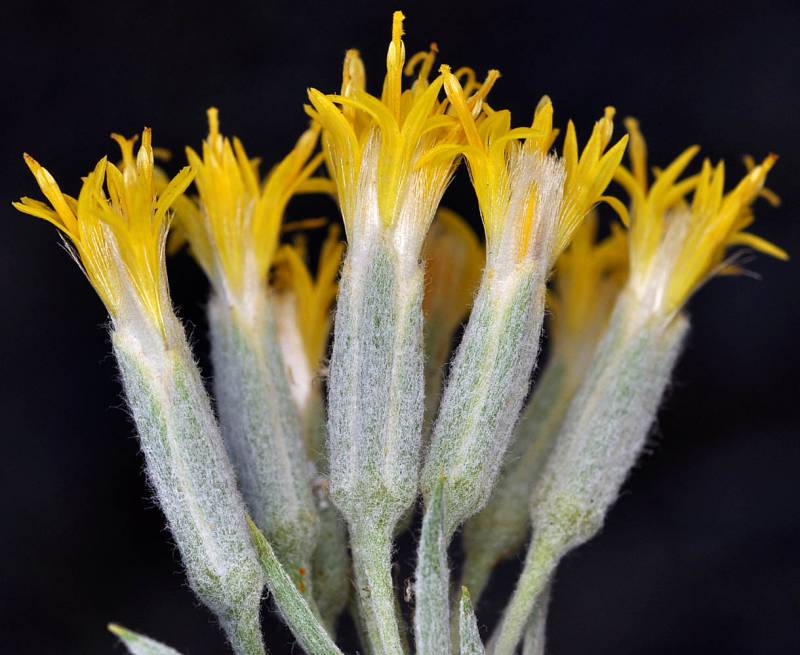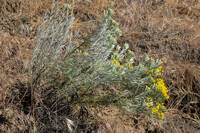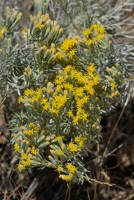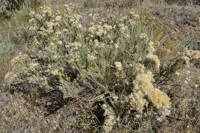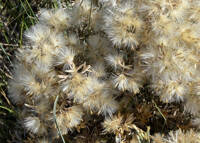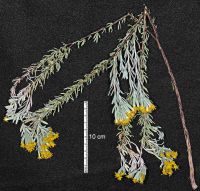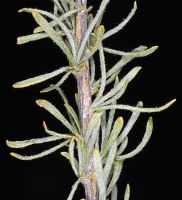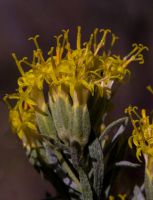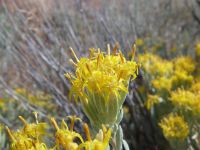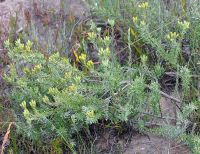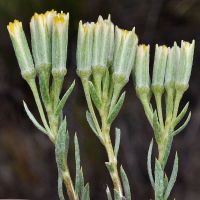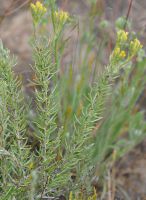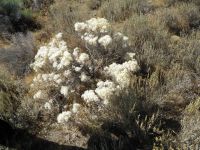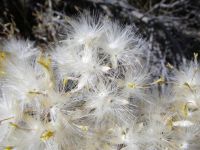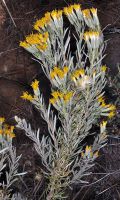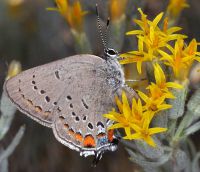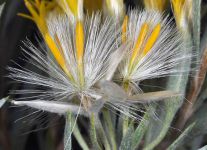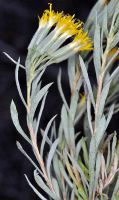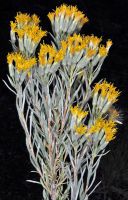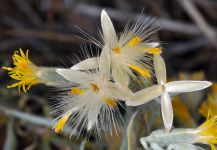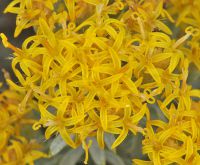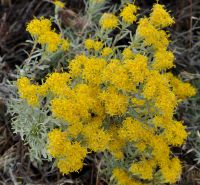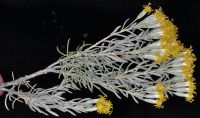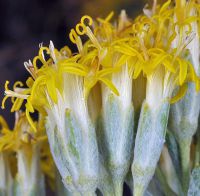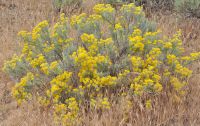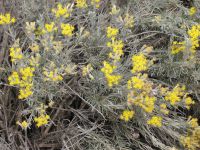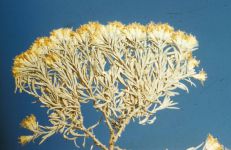Distribution: Occurring east of the Cascades crest in Washington; southern British Columbia to California, east to the Rocky Mountains.
Habitat: Dry, open places in sagebrush.
Flowers: June-September
Origin: Native
Growth Duration: Perennial
Conservation Status: Not of concern
Pollination: Bees, flies, beetles, wasps
Unarmed, much-branched shrubs, 2-6 dm. tall, closely grey-woolly throughout.
Primary leaves linear to oblanceolate, entire, 1-3 cm. long, often with shorter and broader leaves in the primary leaf axils.
Heads in small, flat-topped clusters terminating the numerous branches; involucre 7-10 mm. high, cylindric, the bracts 4-5, erect and equal; corollas 4 in each head, yellow, all tubular, the lobes longer than the throat; pappus of numerous whitish, capillary bristles.
Achenes terete, usually densely hairy.
Publication: Prodr. 6: 440. 1838.
PNW Herbaria: Specimen records of Tetradymia canescens in the Consortium of Pacific Northwest Herbaria database
WA Flora Checklist: Tetradymia canescens checklist entry
OregonFlora: Tetradymia canescens information
E-Flora BC: Tetradymia canescens atlas page
CalPhotos: Tetradymia canescens photos

